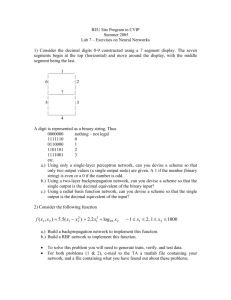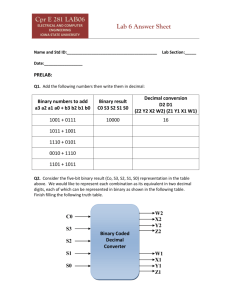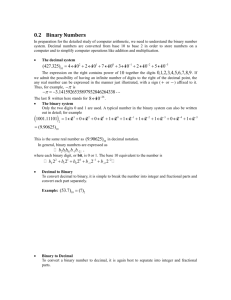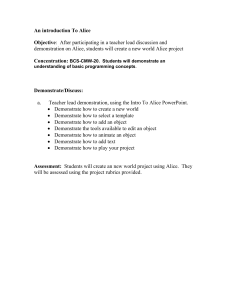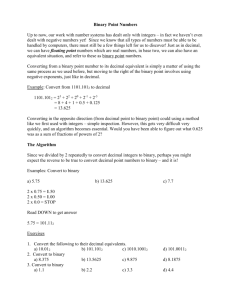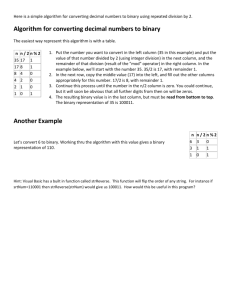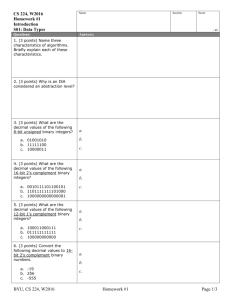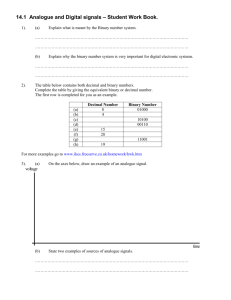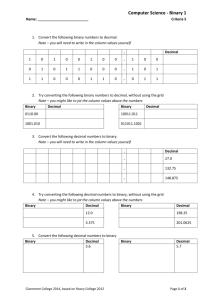Digitial Logic and Binary Numbers
advertisement
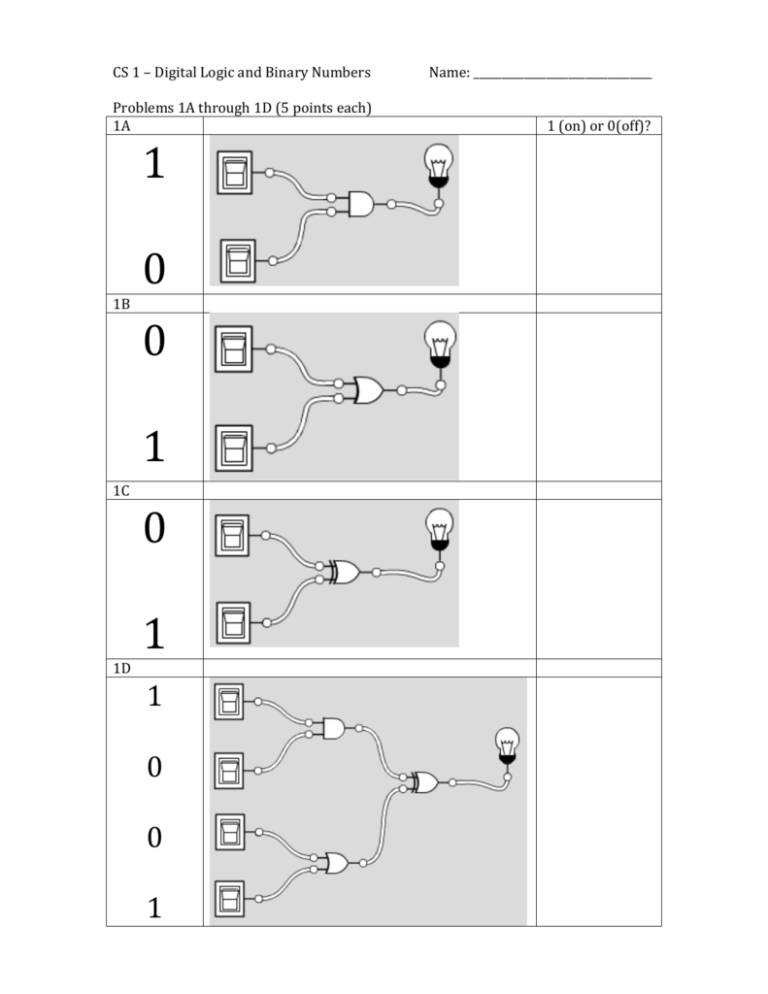
CS 1 – Digital Logic and Binary Numbers Name: ________________________________ Problems 1A through 1D (5 points each) 1A 1 (on) or 0(off)? 1 0 1B 0 1 1C 0 1 1D 1 0 0 1 Problems 2A through 2D (5 points each) 2A 1 1 2B 1 0 2C 1 0 2D 1 1 1 0 1 (on) or 0(off)? Problems 3A through 3D (5 points each) 3A 1 1 3B NOTE: Igore the lightbulb. This is a “1” (ON) bit. 1 3C 1 0 3D 1 1 1 1 (on) or 0(off)? Part 2: Convert the following decimal (base 10) numbers to binary (base 2) (2 points each) Decimal (base 10) 1 2 3 4 5 6 7 8 9 10 Binary (base 2) 25 120 67 192 29 30 31 32 33 34 Part 3: Convert the following binary (base 2) numbers to decimal (base 10) (2 points each) Binary (base 2) 1 2 3 4 5 6 7 8 9 10 10100011 00110011 00001010 11110000 00001001 00001010 00001011 00001100 00001101 00001111 Decimal (base 10) CS 1 – Digital Logic and Binary Numbers Name: ________________________________ Answer Sheet Answer 0 (off) or 1 (on) for the following: (5 points each) 1A: __________ 1B: __________ 1C: __________ 1D: __________ 2A: __________ 2B: __________ 2C: __________ 2D: __________ 3A: __________ 3B: __________ 3C: __________ 3D: __________ Part 2: Convert the following decimal (base 10) numbers to binary (base 2) (2 points each) Decimal (base 10) 1 2 3 4 5 6 7 8 9 10 Binary (base 2) 25 120 67 192 29 30 31 32 33 34 Part 3: Convert the following binary (base 2) numbers to decimal (base 10) (2 points each) 1 2 3 4 5 6 7 8 9 10 Binary (base 2) Decimal (base 10) 10100011 00110011 00001010 11110000 00001001 00001010 00001011 00001100 00001101 00001111

